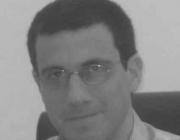His primary research interests lie in exploring the ties between two seemingly very different fields: statistical physics and the theory of telecommunications. The crucial feature, which connects them conceptually, is the underlying randomness and complexity appearing in both. In physical systems the randomness appears due to the presence of imperfections, which, combined with interactions result to high complexity. In the case of communications systems, the stochastic behavior can be manifested at various levels. For example, it may be due to the random nature of the propagation environment (multi-path wireless channel), which necessitates a statistical description of the received signal. One can then describe and quantify the limits of information transfer in systems with multiple antennas by using models and techniques from statistical physics, such as random matrix theory and replicas. Statistical physics methods have also been applied in other aspects of telecommunications systems, such as detecting the signals of multiple CDMA users with codes that may be treated as random or mapping the process of decoding a encoded signal to finding the ground state of a spin glass. In the last few years there has been a flurry of interest in the cross-fertilization of methods and ideas in both fields, which only guarantees that more exciting connections between statistical physics and communications systems will appear in the near future.
At the same time he is also involved in more applied but equally challenging problems in wireless communications. Current research topics involve next-generation multi-antenna systems, physical and system layer design and dynamic optimization of wireless networks.

